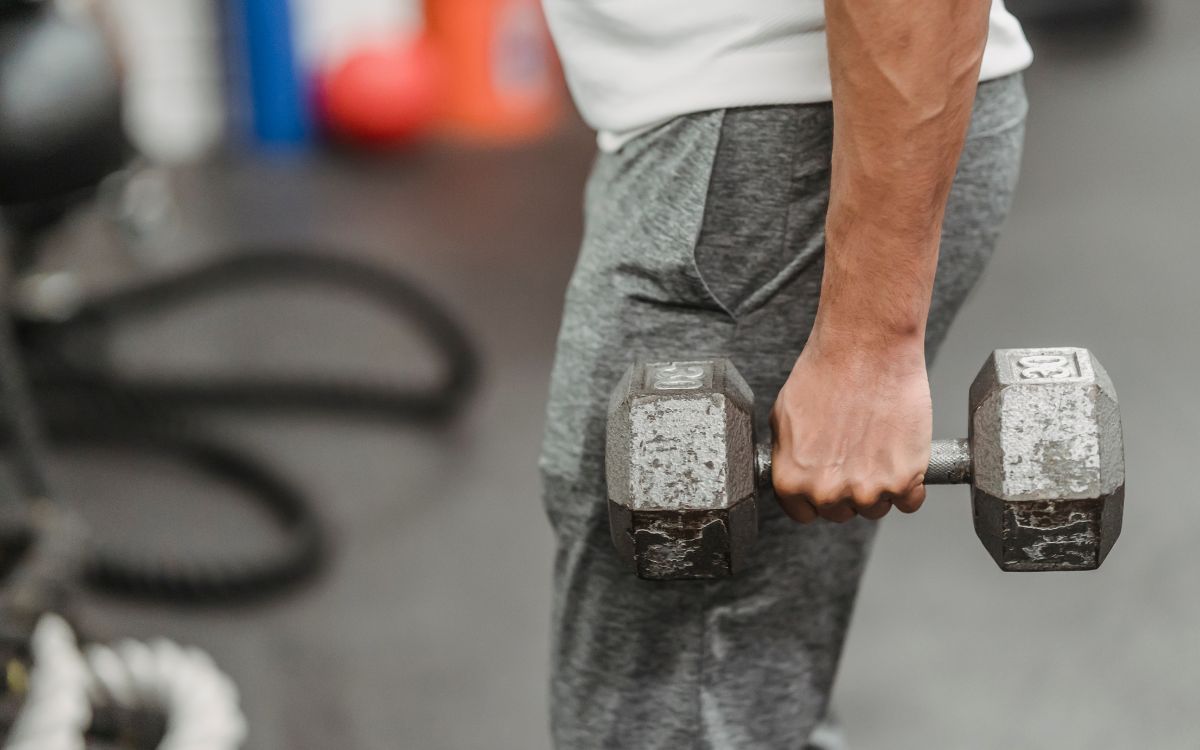Top 5 Proven Weight Loss Methods Americans Are Loving in 2025
Top 5 Proven Weight Loss Methods Americans Are Loving in 2025 the weight-loss environment of America is fast-changing due to scientific advancements, sociocultural paradigms, and a greater emphasis on the sustainable health paradigm. With the CDC estimating that almost 40.3% of U.S. would be considered obese (down slightly from 41.9% in 2017-2020), the American population is looking for ways to lose weight and be healthy that are effective and evidence-based. The article delves into the top five proven weight-loss methods that have caught the attention of Americans in 2025 and that all evidence, expert opinion, and real-world success stories support. For each method, the article gives useful tips to consider, advantages of the method, and other things to consider as you embark on your weight-loss journey.
1. GLP-1 Medications with Behavioral Coaching
Overview
Since their introduction, the GLP-1 receptor agonists such as semaglutide (Wegovy, Ozempic) and tirzepatide (Mounjaro, Zepbound) have had a meteoric rise in popularity, netting $26.3 billion in global sales in 2023 alone. Even as late as 2025, these remain the cornerstone of weight loss, especially when used together with behavioral coaching programs such as Noom Med or Weight Watchers. The drugs simulate glucagon-like peptide-1 hormone pathways curtailing appetite and causing gastric delay in emptying- effecting tremendous weight loss (15-22% of body weight over 68 weeks).
Why It’s Popular
Americans love GLP-1s for their astonishing results, dramatic effects, and medical establishment acceptance. The SURMOUNT-5 trial turned the tables on this movement, with Mounjaro showing 20.2% subjects lost body weight vs. 13.7% for Wegovy, and this proved a turning point. Many have now come to know and use the combination via platforms including Noom Med, Cardio to bun belly fat which addresses psychology-based coaching that dig into the behavioral and emotional aspects surrounding how a person eats. An estimated 6% of U.S. (15.5 million people) say they have used injectable weight-loss drugs, according to a 2024 Gallup poll. This suggests that the injections hold significant attraction.
How It Works
- Medication: Given as weekly injections or daily oral doses (i.e., Rybelsus), GLP-1 medications work by reducing hunger and increasing feelings of fullness.
- Behavioral Coaching: Programs like Noom use AI-driven insights, food tracking, and one-on-one coaching to reinforce healthy habits such as mindful eating and stress management.
- Exercise: Moderate activity (150 minutes per week) is beneficial for enhanced results and in the preservation of the muscles.
Benefits
- It has been shown clinically to cause 48% more weight loss when combined with coaching versus with medication alone.
- It helps to improve health markers such as blood pressure, cholesterol, and blood sugar.
- It is sustainable with lifestyle changes, significantly reducing the long-term need for medication.
Considerations
- Cost: Assigning costs of $1,000-$1,500 a month without insurance, injectable weight-loss drugs could also be accessible on telehealth platforms such as Ro for as low as $149 for the first month.
- Common adverse effects include nausea, diarrhea, and the remote possibility of muscle loss, which are counteracted by Noom Muscle Defense™ protocol stressing protein intake.
- Access: The receptiveness of Mounjaro, approved in 2024 by NHS England for a total of 220,000 patients, is increasing. In contrast, reimbursement in the U.S. remains limited, particularly for Medicare.
Success Story
Jane, a teacher from Texas, lost 45 pounds on Mounjaro and Noom. “The medication curbed my cravings, but Noom’s daily lessons helped me understand why I overate. I now cook high-protein meals and walk 30 minutes daily,” she says.
Helpful Advice
- Consult a doctor for eligibility (generally admits BMI ≥30 or ≥27 with comorbidity).
- Pair Noom Weight ($70/month) with the program for the extra personalized support.
- Track protein intake (1.6-2.2g/kg body weight) to safeguard the muscle.
2. Meal Delivery Services Plus Thanksgiving Dinner on a Mediterranean Diet
Overview
Mediterranean diet is considered the best diet for 2025 by the U.S. News and World Report; the Mediterranean diet emphasizes whole foods such as fruits, vegetables, whole grains, seafood, nuts, and olive oil and severely limits processed foods and red meat. Reduce belly fat This diet is coupled with meal delivery systems that are meant to simplify adherence to the 2025 Mediterranean diet in America, with HelloFresh or Blue Apron providing pre-portioned, dietitian-approved meals.
Why It Is Popular
Flexibility and versatility of the Mediterranean diet and mouthwatering taste made it emerge highly favored since 80 percent of U.S. consumers are trying to add more fruits and vegetables into their diet. Weight Lose Meal Plan Meal delivery services, growing at the rate of 10 percent annually, are catering to busy professionals and families. Research proves this diet helps reduce 5-10 percent body weight and lowers cardiovascular risk by 30 percent.
The Way It Works
- Diet Theory: Focus on mostly nutrient-dense foods (salmon, quinoa, and avocado) consumed in moderation; limit sugar and refined carbs.
- Meal Delivery: Provides recipes and on-demand ingredients for 2 to 4 servings, tailored to meet various Mediterranean dietary principles (low-calorie, high-fiber meals, etc.).
- Lifestyle: Integrate daily moving about (walk around) and socialize during mealtimes to foster mental health.
Pros
- Very sustainable and non-restrictive, thus prevents diet fatigue.
- Rich in fiber and protein, which sustain satiety and gut health.
- Convenient for busy individuals, where 64% of Americans actually prepare home-cooked lunches.
Things to Consider
- Costs: Meal kits cost about $8-$12 per serving, but bulk discounts apply.
- Time: It takes anywhere between 20-40 minutes to cook a meal; thus, less time-consuming compared to grocery shopping.
- Variety: Limited menus might induce a sense of repetition without adequate planning.
Success Story
Mark, from California, is a 35-year-old IT specialist who lost 30 pounds in six months. Detox drink to lose belly fat “HelloFresh’s Mediterranean meals made cooking fun. I swapped soda for water and biked to work,” he relates.
Useful Tips
- Opt for services featuring Mediterranean-specific plans (e.g., Green Chef’s “Plant-Powered” option).
- Cook some meals ahead of time to save time.
- Members form communities like Noom Circles for recipe ideas and motivation.

3. AI-Tracked High-Protein, Low-Carbohydrate Diets
Strategy
High-protein, low-carb diets inspired by Keto and the Atkins are: as of 2025, focusing primarily on lean proteins such as chicken, fish, eggs, or tofu and moderate amounts of carbs 30 to 50g daily. Weight Loss Diet Chart With AI-supported apps such as MyFitnessPal and Cronometer, which look at wearable data from devices like Fitbit and Apple Watch to keep track of macros and suggest personalized meal planning, this diet earned 37% popularity in the US; of people thereby engaging.
Why It Works
The diet mainly targets young people with a very high emphasis on protein and exercise. Another statistic shows that 63% of Gen Z men link protein with working out. In 2018, it was found that high-protein diets, due to the satiety they confer upon the individual, preserve muscle, and induce weight loss of 5% to 7% in 12 weeks. The convenience of tracking with AI is a plus and would help in compliance.
How It Works
- Diet: 25%-35% calories from protein, 20%-30% carbs, 35%-45% healthy fats. Example: grilled chicken with broccoli and avocado.
- Exercise: Apps assess food logs, activity, and sleep to algorithmically readjust calorie and macro goals.
- Exercise: Muscle maintenance is complemented with strength training (3-4 times a week).
Benefits
- Promotes fat burning while preserving lean mass.
- Real-time feedback delivered by AI enhances personal accountability.
- Prevents cravings by normalizing blood sugar levels.
Considerations
- Complicated: Without tech aid, macro tracking could become a headache.
- Costly: Premiums are $10-$20 a month, and high-protein foods (e.g., salmon) are pricier.
- Sustainability: Sustained carb restriction may eventually cause nutrient deficiencies without balancing.
Success Story
Sarah, a 28-year-old graphic designer based in New York, lost 25 lbs while using Cronometer. “The app showed I wasn’t eating enough protein,” she says. “Now I lift weights, I’m stronger.”
Practical Tips
- Try a freemium app such as MyFitnessPal before switching to premium.
- Add some plant protein sources (i.e., lentils, edamame) to save costs.
- Consult a dietitian regarding nutritional gaps due to low calorie intake.
4. With the Countenance of Programs
Intermittent fasting (IF) was top on the list in 2025, especially in conjunction with structured programs such as Simple and Zero. Most programs provide fasting schedules, meal ideas, and social support for the participants; 42% of report annual attempts at weight loss.
What Makes It Popular
There is a simplicity with flexibility in IF that resonates with many Americans, largely those seeking immediate results. Studies show weight reduction of 3%-8% at 8-12 weeks, equivalent to traditional dieting. Apps facilitate compliance by providing reminders and tracking progress.
How It Works
- Fasting Schedule: Eat only in the specified time window (for example, 12 PM to 8 PM) and otherwise fast. During fasting, hydration is very important.
- Nutrition: Eat balanced meals in the open window to avoid binge eating.
- Apps: Provide timers, recipes, and educational content for beginners into fasting.
Benefits
- Helps to reduce calorie intake without really ever being on a diet.
- Improves insulin sensitivity and metabolic health.
- These apps mostly will be free and very inexpensive to use (Simple: $15 per month).
Considerations
- Side Effects: There could be hunger, fatigue, and irritability, etc. in the beginning.
- Not for everybody: If someone is active in pregnancy, underweight, or has an eating disorder, then that individual should not do IF.
- Sustainability: Requires discipline to maintain over the long term.
Success Story
The 16:8 method helped a Florida accountant, 50-year-old David, drop 20 pounds. “The Zero app kept me on track, and I stopped late-night snacking.”
Some Practical Hints
- Achieving a first 12:12 schedule often helps to break in fasting.
- Protein-rich meals should be used to break fasts so as to cut back on hunger.
- Maintain hydration during fasting with water, tea, or black coffee.
5. Group Fitness Programs Using Technological Influence
Overview
Group fitness programs such as Peloton, Orangetheory, and CrossFit use technology-wearables, virtual classes combined with exercise, and social support. The year 2025 had 64 million Americans registered in gym accounts where platforms became virtual to the entire fitness group.
Why It Is Popular
These programs work for community motivation, 62.9% of Americans use their exercise routines for weight loss. Research has shown that 5%-10% weight loss occurs concurrently through group exercises when paired with dietary changes as it creates social accountability.
How It Works
- Workouts: HIIT, cycling, strength, and more offered in-person and on-demand apps.
- Technology: Wearables that track heart rate, calories, and steps; real-time results sync to leaderboards to encourage friendly competition.
- Nutrition: Many of these programs have dietitians and meal plans that are complimentary to the exercise routine.
Benefits
- It is believed to burn around 500-800 calories in a session working on weight loss.
- It reduces dropouts with the community support.
- Online options (Peloton: $44/month) perfectly fit into our busy schedules.
Considerations
- side Effects: Early signs will be hunger, tiredness, or crankiness.
- Not for All: Intermittent fasting is unsuitable for pregnant women, underweight people, or those suffering from eating disorders.
Advisories
- Side Effects: Early signs will be hunger, tiredness, or crankiness.
- Not for All: Intermittent fasting is unsuitable for pregnant women, underweight people, or those suffering from eating disorders.
- Sustainability:: Long-term discipline is a requisite to sustain this.
Success Story
A Florida resident and accountant aged 50, David, lost 20 pounds using the 16:8 method. “The Zero app kept me on track, and I stopped late-night snacking,” he points out.
Practical Tips
- Start witho 12 schedules to gradually shift into fasting.
- Break fasts with protein-rich meals to reduce hunger pangs.
- Stay hydrated with water, tea, or black coffee during fasting.
5. Technology-Driven Group Fitness Programs
Overview
Group fitness programs such as Peloton, Orangetheory, and CrossFit have now integrated high-tech devices into the delivery of exercise and social support (wearables, virtual classes). In 2025, 64 million Americans will have gym memberships, such that the virtual platforms will make fitness accessible for all.
Why It’s So Popular
They have the community motivational factor such that among the 62.9% of Americans who use exercise for weight loss, research presents that when exercise is used with dietary changes, they would tend to lose approximately 5–10% of their starting weight due in part to social accountability in the adherence.
How It Works
- Workouts: Type of workout is high-intensity interval training (HIIT), cycling, or strength classes, available in-person or via apps.
- Technology: Wearables measure the user’s heart rate, calories burned, and steps taken by the user, which sync with leaderboards to encourage competition.
- Nutrition: Many of these programs have a dietitian-directed feeding regimen to go with their exercise.
Advantages
- Burns 500–800 calories in every session: Speeding up weight loss.
- Community support minimizes dropout rates.
- Virtual flexibility (e.g., Peloton: $44/month) for busy lifestyle schedules: In-person sessions cost $20-$40 per session; equipment (e.g., Peloton bike) costs from $1,500 onwards.
Considerations
- Cost: $20-40 per in-person session; $1,500+ for equipment (e.g., Peloton bike).
- Intensity: High-impact workouts may not be suited to beginning exercisers or those with joint problems.
- Time: A recommended 3-5 hours a week will maximize results.
Success Story
Orangetheory helped Lisa, a 39-year-old nurse from Chicago, lose 35 pounds. “The group energy kept me going and my Apple Watch showed I burned 600 calories per class,” she adds.
Practical Tips
- Try free trials (for example, Peloton’s 30-day app trial) before committing to the program.
- Alternate sessions with high intensity and low impact to avoid burnout.
- Join online fitness communities to get an extra push to be active.
Conclusion
By 2025, weight-loss solutions that combine science, technology, and sustainability have found acceptance among Americans. GLP-1s with coaching, Mediterranean diets with delivery of meals, high-protein diets with AI tracking, intermittent fasting with apps, and technology-led group fitness have been recognized for their effectiveness and popularity. Each of the methods offers its advantages, including rapid weight loss and better long-term health, but in the end, their success will depend on personalization and adherence. The assistance of qualified professionals is necessary to provide an individualized assessment on the applicability of each strategy to the patient, while technology and social support can be used for maximum motivation. When applied with commitment, these methods can change not only your weight but also your quality of life.










